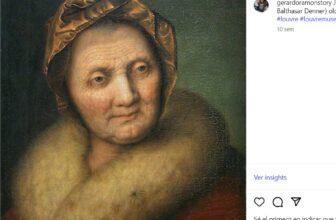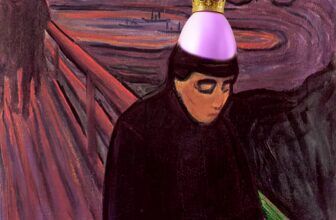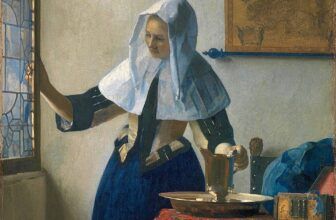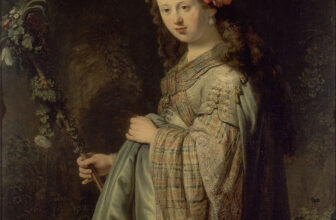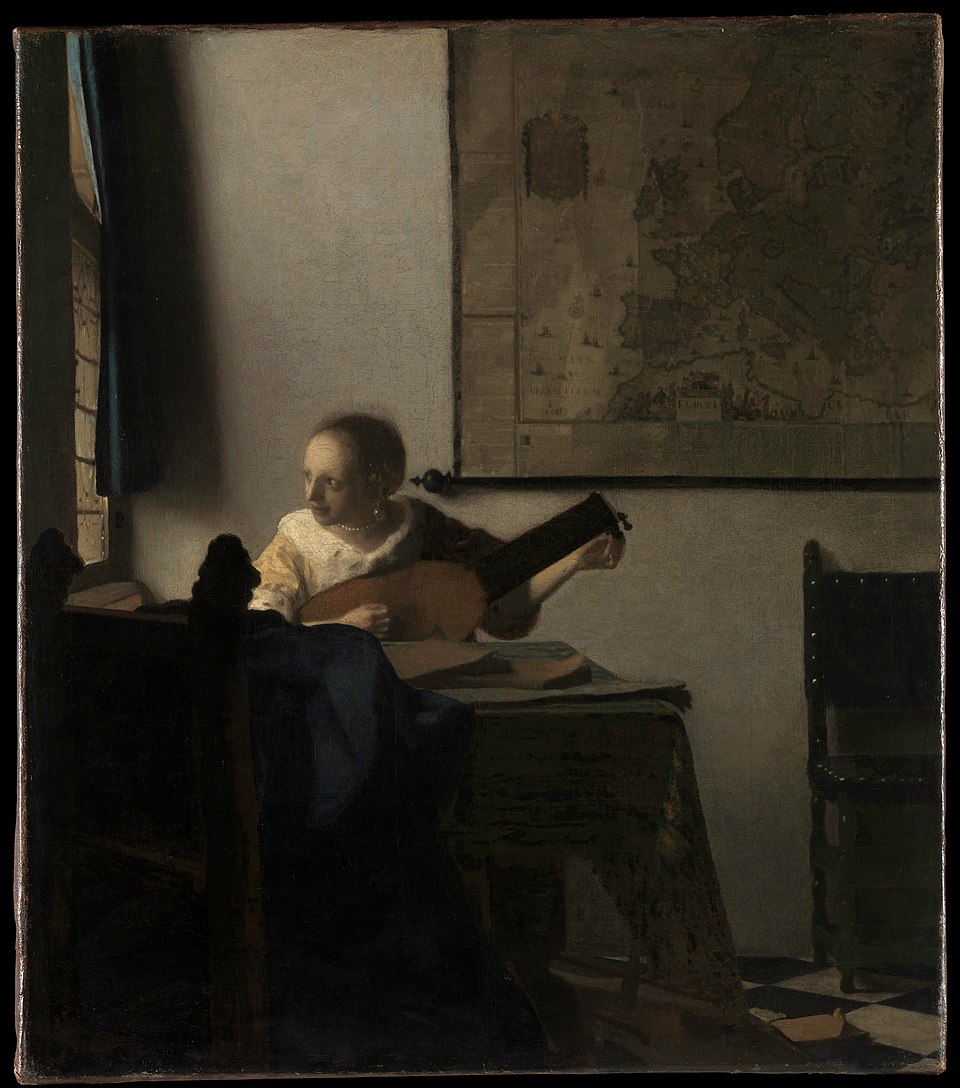
Meaning of Johannes Vermeer’s Woman with a Lute
Johannes Vermeer, the Dutch master of light and stillness, is remembered today as one of the greatest painters of the Dutch Golden Age. Though his surviving body of work is relatively small, just over 30 paintings, each composition reveals a mastery of atmosphere, intimacy, and symbolism. Among his lesser-known but deeply compelling works is Woman with a Lute, created around 1662–1664. This canvas exemplifies Vermeer’s ability to transform the quietest of domestic interiors into profound meditations on longing, human emotion, and the passage of time.
In this essay, we will explore the story behind Woman with a Lute, examine how Vermeer painted it, analyze its symbolism and meaning, and place it within the broader context of 17th-century Dutch art. We will also look at where this masterpiece is housed today, and why it continues to resonate with viewers centuries after its creation.
What is Woman with a Lute?
Vermeer’s Woman with a Lute seems like a simple domestic scene. A young woman sits in a quiet, sunlit dark interior. She is elegantly dressed, her hair modestly covered, and she holds a lute in her lap. The instrument is tilted upward, and her gaze is turned away from the viewer. Instead of looking down at the strings or engaging with her music, she looks outward, toward an unseen window, her expression both pensive and expectant. Behind her, a large wall map dominates the composition, adding depth and narrative resonance to the scene.
The moment is quiet and suspended in time, as though Vermeer has caught her mid-thought. This “caught in-between” quality is one of Vermeer’s hallmarks, his women often appear to exist in moments of contemplation, their minds wandering beyond the domestic walls that contain them.
The Story of Woman with a Lute
Unlike history paintings, Vermeer’s domestic interiors rarely depict a single, explicit story. Instead, they suggest narratives through gesture, light, and symbolism. In Woman with a Lute, the story is one of longing and anticipation.
The lute in her hands was not merely a musical instrument but a symbol of love and courtship in 17th-century Dutch culture. Music-making was often associated with romance, harmony, and communication between lovers. A woman tuning her lute or preparing to play often signified that she awaited her beloved or dreamed of love’s fulfillment. Her gaze toward the window underscores this idea: she looks beyond her immediate environment, perhaps anticipating the arrival of a suitor or longing for someone absent.
The large map of Europe hanging behind her adds another layer of meaning. Maps in Vermeer’s works often symbolize travel, distance, or a world beyond the domestic sphere. Combined with her yearning gaze, the map suggests that her thoughts extend far beyond the room she inhabits, perhaps to a distant lover or a life yet to be experienced.
Thus, the “story” of this painting is subtle but deeply human: a young woman suspended between music, desire, and dreams of the world beyond.
How Was Woman with a Lute Painted?
Vermeer’s technique in Woman with a Lute reflects his extraordinary mastery of light and texture. His working method combined traditional oil painting with innovative use of perspective and possibly optical devices such as the camera obscura. While debate about his use of optical aids continues, there is little doubt that Vermeer had a remarkable ability to capture how light behaves in real space.
Composition and Perspective
The composition is carefully arranged to guide the viewer’s eye. The woman is placed slightly off-center, with the lute angled diagonally across the foreground. The light source, the open window to the left, is unseen but powerfully felt, illuminating the figure and objects with a natural radiance. The large wall map serves as a backdrop, balancing the figure’s placement and deepening the illusion of space.
Light and Color
Vermeer’s use of light is especially striking. The daylight streaming in from the left creates a soft glow on the woman’s face and clothing, while casting subtle shadows that anchor her in space. His palette is restrained yet luminous, soft yellows, blues, and earthy tones that harmonize with the golden-brown wood of the lute. This restrained palette enhances the painting’s mood of quiet introspection.
Technique
Vermeer was known for his slow, meticulous technique. He used thin glazes to build depth and transparency, allowing light to penetrate the layers of paint and reflect back, giving surfaces a luminous quality. In Woman with a Lute, this is especially visible in the rendering of the woman’s satin dress and the polished surface of the lute. The map, too, is painted with remarkable precision, showing Vermeer’s ability to balance decorative detail with atmospheric unity.
What Does Woman with a Lute Represent?
At its core, Woman with a Lute represents longing, harmony, and the interplay between inner life and outer world.
Longing and Absence: The woman’s distant strange gaze while tuning the lute suggest that she is feeling tense and unsure. The painting conveys a quiet emotional tension, she is present in the room, but her mind is elsewhere.
Music as Symbol of Love: In Dutch art, musical instruments often symbolized love, seduction, or the harmony between two people. A lute was especially associated with courtship. In this sense, the painting represents romantic anticipation.
The World Beyond: The map in the background expands the meaning beyond personal desire, hinting at broader horizons, travel, or the idea of life beyond domestic confines. For a woman of Vermeer’s time, this could symbolize dreams of a world not easily accessible.
Thus, the painting is not merely about a woman tuning an instrument; it is about the universal themes of desire, absence, and the longing for connection.
Symbolism in Woman with a Lute
Every detail in Vermeer’s work carries symbolic weight.
The Lute: The lute is the central symbol. It represents love, harmony, and the desire for union. A lute that is being tuned suggests preparation, much like preparing for love or awaiting a lover.
The Map: Maps were common in Dutch homes of the 17th century, reflecting the Netherlands’ global trade empire. In art, they often symbolized exploration, curiosity, and the wider world. In this painting, the map suggests that the woman’s thoughts travel beyond her immediate surroundings.
The Window and Light: Though unseen, the window is implied by the direction of light. Windows often symbolize opportunities, hope, and the connection between inner and outer life. Here, it underscores her longing for what lies beyond her reach.
Her Gaze: The woman does not look at her lute or at the viewer, but outward. This deliberate choice directs attention to her emotional state, she is not absorbed in music but in thought, suggesting longing or absence.
Taken together, these symbols create a layered narrative: love desired, love delayed, and the yearning for something distant.
What is Happening in Woman with a Lute?
The literal action is deceptively simple: a woman is tuning her lute. Yet Vermeer’s genius lies in transforming this mundane act into a psychological drama.
She is not playing the instrument; she is preparing it, suggesting anticipation rather than fulfillment. Her gaze indicates that her attention is elsewhere, she might be listening for someone’s arrival, or thinking of a lover far away. The scene is not one of performance but of waiting.
This tension, between action and inaction, presence and absence, is what gives the painting its emotional depth. It captures a fleeting moment where inner longing interrupts outward activity.
What Type of Art is Woman with a Lute?
Woman with a Lute belongs to the genre of Dutch Golden Age genre painting. Genre paintings depicted scenes of everyday life, domestic interiors, taverns, markets, rather than grand historical or religious subjects.
Vermeer specialized in intimate domestic interiors featuring women engaged in ordinary tasks: writing letters, reading, playing instruments. Yet within this “ordinary,” he infused extraordinary depth, transforming domestic scenes into meditations on life, love, and time.
Stylistically, the painting exemplifies Baroque realism, characterized by naturalistic detail, dramatic use of light, and a sense of immediacy. However, Vermeer’s interpretation of Baroque is unique: where other Baroque artists emphasized drama and dynamism, Vermeer emphasized quiet, stillness, and interiority.
Where is Woman with a Lute Today?
Today, Woman with a Lute is housed in The Metropolitan Museum of Art in New York City. It is part of the museum’s European paintings collection and remains one of the highlights for visitors seeking Vermeer’s intimate, luminous visions of 17th-century life.
The painting’s presence in the Met underscores Vermeer’s global stature. Though little known in his own lifetime outside Delft, today his works are treasured in the world’s greatest museums, including the Rijksmuseum in Amsterdam, the Mauritshuis in The Hague, and the Met in New York.
Why Woman with a Lute Still Matters
The enduring power of Woman with a Lute lies in its universality. Though painted over 350 years ago, it speaks to timeless human emotions: the anticipation of love, the yearning for what is absent, the dream of a life beyond one’s walls.
Vermeer does not tell us precisely what the woman is thinking, and that ambiguity is what makes the painting so powerful. Each viewer brings their own experience of longing, waiting, or dreaming to the canvas, finding in her pensive gaze a mirror of their own inner life.
Johannes Vermeer’s Woman with a Lute is far more than a depiction of a woman tuning an instrument. It is a meditation on love, longing, and the passage of time, rendered with Vermeer’s characteristic mastery of light, composition, and symbolism.
Through subtle details, the lute, the map, the unseen window, Vermeer suggests a narrative of absence and desire, while his luminous technique transforms a domestic interior into a timeless reflection of the human condition.
Today, housed in the Metropolitan Museum of Art, the painting continues to captivate viewers with its quiet emotional resonance. It invites us to pause, to reflect, and to recognize that even the simplest of moments can contain worlds of meaning.
